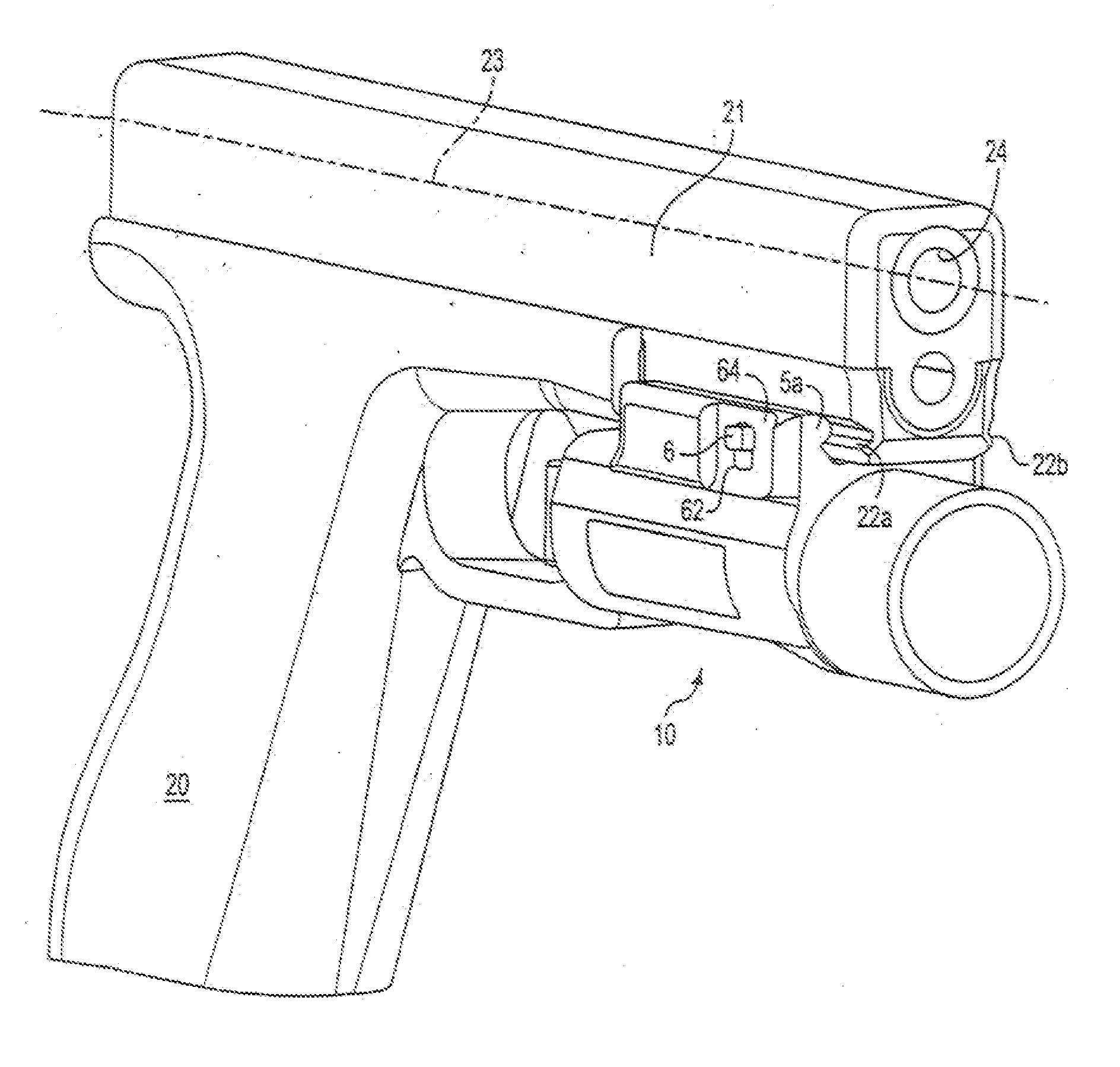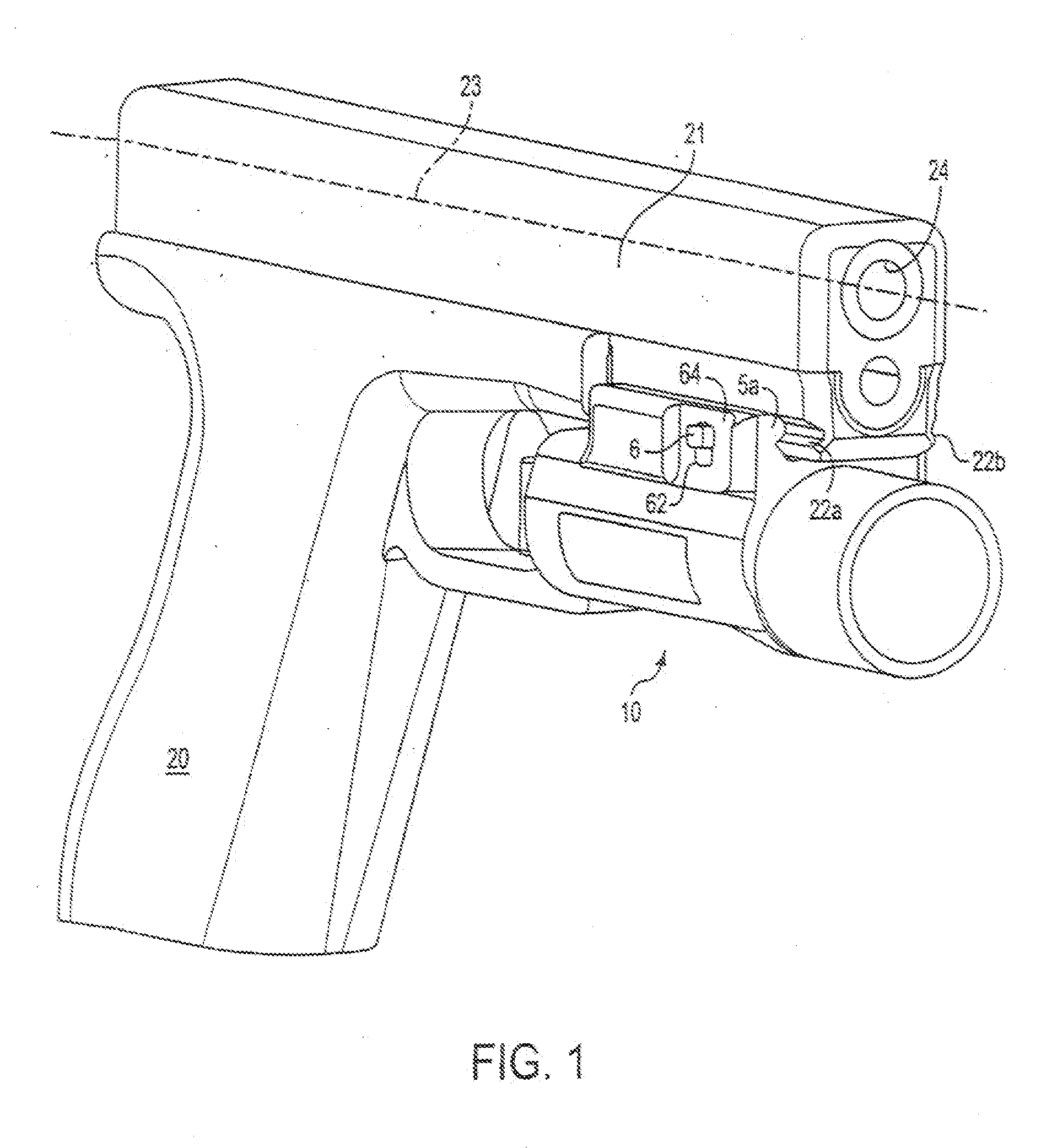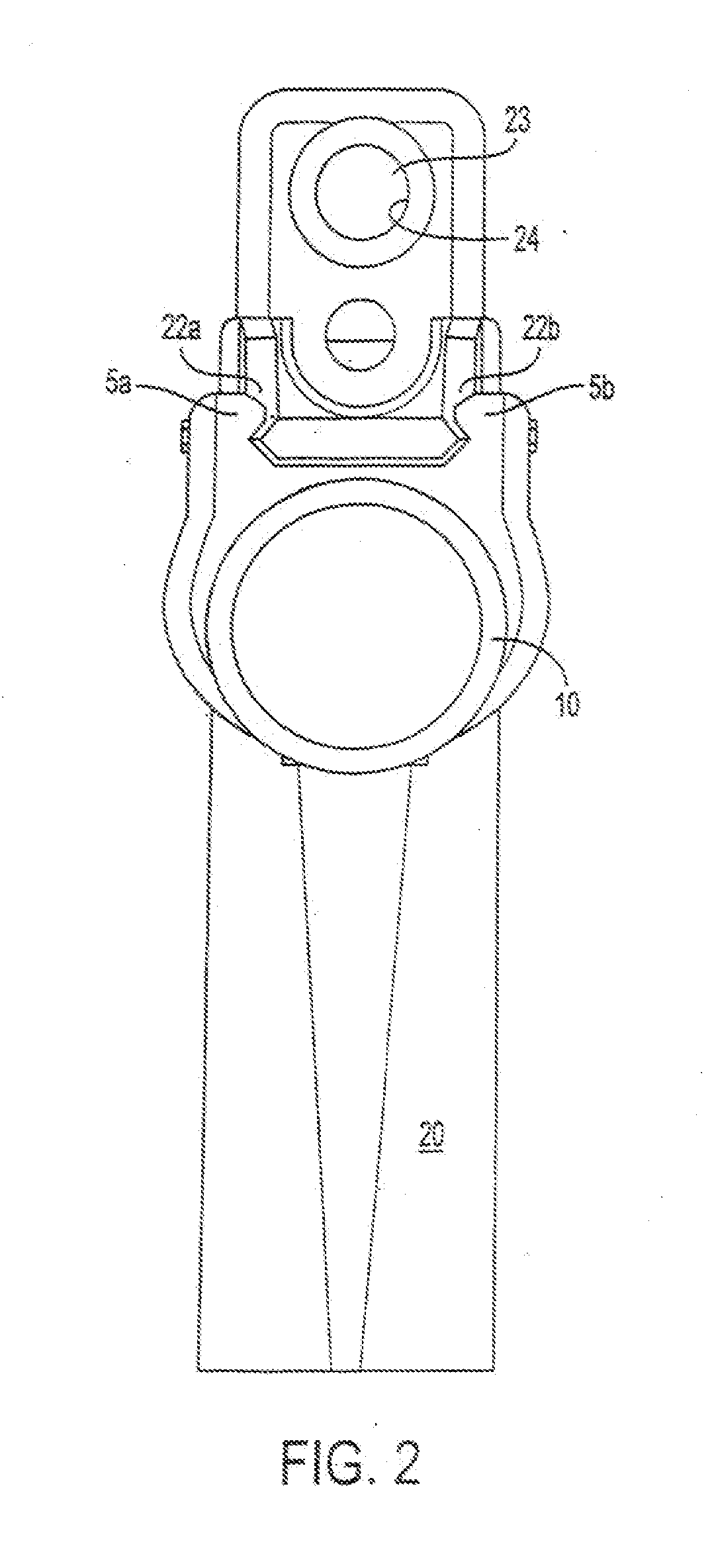Auxiliary device for a weapon and attachment thereof
a technology of auxiliary devices and weapons, applied in the direction of sighting devices, cartridge extractors, weapons, etc., can solve the problems of time-consuming operation, time-consuming attachment and detachment of these devices, and may be critical to the safety of the user, so as to prevent the rotation of the rotatable member
- Summary
- Abstract
- Description
- Claims
- Application Information
AI Technical Summary
Benefits of technology
Problems solved by technology
Method used
Image
Examples
Embodiment Construction
[0060] With reference to FIGS. 1, 2 and 4, there is depicted an auxiliary device 10 mounted to a pistol-type weapon 20. For convenience, the description that follows refers to the auxiliary device as an illuminator, which is a device generally used to cast light upon a target area or a portion thereof. This should not be construed as a limitation of the invention, however, as this embodiment is for illustrative purposes only. As those skilled in the art will appreciate from this disclosure, the novel features described herein may readily be applied to other auxiliary devices and weapons. Moreover, the figures are provided as examples only. It is to be understood that the invention is not limited to the particulars depicted in the figures.
[0061] According to one embodiment, weapon 20 comprises a weapon frame 21 with rails or grooves 22a and 22b, located in and extending along at least a portion of the weapon frame 21, preferably parallel with an axis 23 of the barrel 24. Preferably,...
PUM
 Login to View More
Login to View More Abstract
Description
Claims
Application Information
 Login to View More
Login to View More - R&D
- Intellectual Property
- Life Sciences
- Materials
- Tech Scout
- Unparalleled Data Quality
- Higher Quality Content
- 60% Fewer Hallucinations
Browse by: Latest US Patents, China's latest patents, Technical Efficacy Thesaurus, Application Domain, Technology Topic, Popular Technical Reports.
© 2025 PatSnap. All rights reserved.Legal|Privacy policy|Modern Slavery Act Transparency Statement|Sitemap|About US| Contact US: help@patsnap.com



